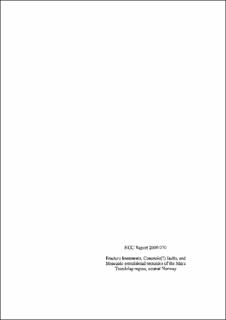| dc.description.abstract | A map of all lineaments resolvable at 1:100,000 scale on a LANDSAT TM5 image utilizing bands 1,2, and 3 was constructed over the Møre Trøndelag region of central Norway. This onshore fracture lineament map was merged with an offshore lineamnet map constructed from 500 meter grid bathymetric data and with maps of potential field data. Analysis of the fracture lineament map resolved a high density region in the north of the study area and a low density region to the south. NW-SE trending fracture lineaments show the greatest variation in density,followed by NE-SW trending lineaments. Densities of N-S and E-W trend- ing lineaments are unaffected by geography. By combining lineament patterns with lineament density grids, topographic and bathymetric data, marine and onshore magnetic and gravity data, field data, and published apatite fission track (AFT) ages we identified three geotectonic blocks. AFT ages within each block are concordant at the 95% confidence level. The AFT ages of the blocks increase from SE to NW and are statistically discrete. Cross sections show that the blocks define a step function topography descending to the NW. Although not precluding strike slip, the data suggest vertical tectonics were important during the Mesozoic and Cenozoic development of the MTFC. Field studies on Vikna Island and the Fosen Peninsula have shown that several lineaments in mid Norway are faults of more than local importance. Steep dip- slip slickenlines on two NE trending fault planes are accompanied by wide damage zones, and a NS trending fault exhibits low angle (strike slip) slicken- lines, extensive brecciation, and cataclasis. On the lineament map, these faults appear as short (<5km) structures forming rhombic intersections with strongly expressed NE-SW lineaments. We interpret these faults to bound small- scale duplex structures within a larger extensional system that ex | |

